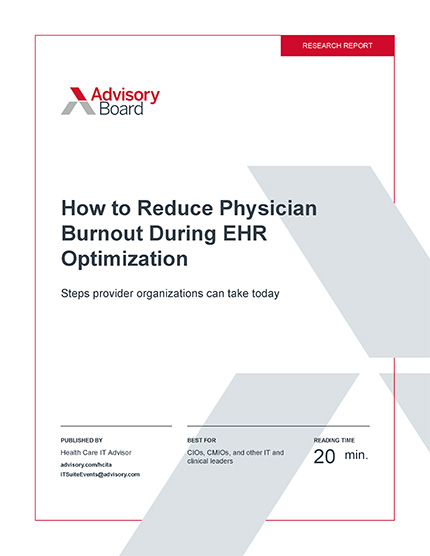Auto logout in seconds.
Continue LogoutIn the face of EHR functionality and workflow challenges, doctors often work around EHRs using handwritten notes and other tactics, instead of working with the technology, according to a study published in PLOS One.
Cheat sheets: Understand EHR optimization, interoperability, and more
Study details
For the study, researchers observed how medical teams at a New England-based academic medical center utilized their EHR system. Researchers used quantitative and qualitative methods to observe EHR use, such as observing doctors during morning rounds, conducting semi-structured interviews, and administering an electronic survey.
Participants came from 12 different care teams and included:
- Attending clinicians
- Residents;
- Interns; and
- Physician assistants.
Key findings
The researchers reported observing "pervasive" workarounds to the EHRs. For example, many clinicians preferred to use handwritten notes because they were easier to process. They also often printed patient summary reports and took notes on them during rounds.
"[T]he extensive use of handwriting as well as other observed workarounds pose a threat to quality of care and patient safety, as they could potentially cause overlooking important information and result in lack of synchronization between care team members," the researchers wrote.
In addition, the researchers found care teams usually shared EHR information before entering a patient's room. If an EHR was used during a visit, it often meant the doctor at the computer was facing away from the rest of the care team. Clinicians said they felt that if a coworker was using the computer, they were more focused on the computer and less on communicating with the rest of the team.
Most clinicians in the survey said EHRs were useful for keeping care teams up to date with one another "most of the time" or "always."
However, many clinicians also anecdotally expressed frustration with the design of EHRs, saying they did not support workflow. One doctor said they often called their two residents at night to give patient updates rather than using handoff features within the EHR, while another doctor said the way information was presented in the EHR made it difficult to find what was needed.
"Gaps between EHR design and the functionality needed in the complex inpatient environment result in lack of standardized workflows, extensive use of workarounds and team communication issues," the researchers wrote. "These issues pose a threat to patient safety and quality of care" (Rappleye, Becker's Health IT & CIO Report, 2/28; Assis-Hassid, PLOS One, 2/25).
Cheat sheets: Understand EHR optimization, interoperability, and more
Download our cheat sheets so you can keep track of the fast-changing technologies and capitalize on opportunities for IT-powered innovation. Check out our guides for these topics and more:
Don't miss out on the latest Advisory Board insights
Create your free account to access 1 resource, including the latest research and webinars.
Want access without creating an account?
You have 1 free members-only resource remaining this month.
1 free members-only resources remaining
1 free members-only resources remaining
You've reached your limit of free insights
Become a member to access all of Advisory Board's resources, events, and experts
Never miss out on the latest innovative health care content tailored to you.
Benefits include:
You've reached your limit of free insights
Become a member to access all of Advisory Board's resources, events, and experts
Never miss out on the latest innovative health care content tailored to you.
Benefits include:
This content is available through your Curated Research partnership with Advisory Board. Click on ‘view this resource’ to read the full piece
Email ask@advisory.com to learn more
Click on ‘Become a Member’ to learn about the benefits of a Full-Access partnership with Advisory Board
Never miss out on the latest innovative health care content tailored to you.
Benefits Include:
This is for members only. Learn more.
Click on ‘Become a Member’ to learn about the benefits of a Full-Access partnership with Advisory Board
Never miss out on the latest innovative health care content tailored to you.

